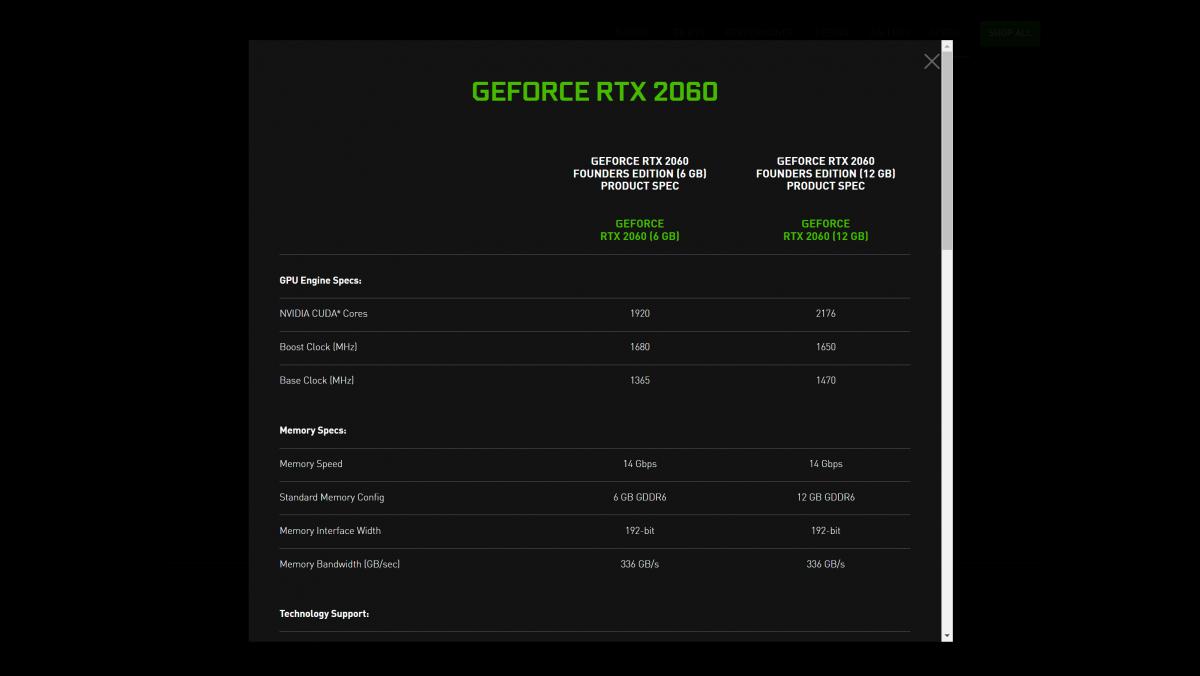The GeForce RTX 2060, which was formerly considered one of the best graphics cards available, is back on the market. Nvidia chose to fire up the Turing burner once more two years after releasing the graphics card, which was released in late 2017. It brings a number of big improvements to the table.
The GeForce RTX 2060 12GB continues to make use of the same TU106 silicon, which is manufactured using TSMC's 12nm FinFET manufacturing process. Whereas the original GeForce RTX 2060 has 30 enabled SMs out of a total of 36, the GeForce RTX 2060 12GB has four more SMs, the same as the GeForce RTX 2060 Super and just two fewer than the GeForce RTX 2070, according to NVIDIA. So the graphics card has 2,176 CUDA cores, 272 Tensor cores, and 34 RT cores at its disposal, which is an increase over the previous model. In other words, the GeForce RTX 2060 12GB has 13.3 percent more CUDA cores than the GeForce RTX 2060.
The GeForce RTX 2060 12GB has a base frequency of 1,470 MHz and a boost clock of 1,650 MHz, which is the same as the GeForce RTX 2060 Super. It also has the same memory bandwidth as the GeForce RTX 2060. This new version features a 7.7 percent faster base clock than the GeForce RTX 2060, although the latter's boost clock is a fraction of a percent quicker than this one (1.8 percent ). The GeForce RTX 2060 12GB, on the other hand, has significantly better FP32 performance. The ordinary version is rated at 6.5 TFLOPs, whereas this 12GB variation is rated at 7.2 TFLOPs, representing a 10.8 percent increase in performance. Nvidia has increased the amount of GDDR6 memory available from 6GB to 12GB. The GeForce RTX 2060 12GB's big amount of memory will not suddenly transform it into a gaming machine capable of delivering an amazing 60 frames per second gaming experience, but it will aid in recent titles that push the memory envelope past 8GB even at 1080p.
| GeForce RTX 2060 Super | GeForce RTX 2060 12GB | GeForce RTX 2060 | |
|---|---|---|---|
| Architecture | TU106 | TU106 | TU106 |
| Process Technology | TSMC 12FFN | TSMC 12FFN | TSMC 12FFN |
| Transistors (Billion) | 10.8 | 10.8 | 10.8 |
| Die size (mm^2) | 445 | 445 | 445 |
| SMs / CUs | 34 | 34 | 30 |
| GPU Cores | 2,176 | 2,176 | 1,920 |
| Tensor Cores | 272 | 272 | 240 |
| RT Cores | 34 | 34 | 30 |
| Base Clock (MHz) | 1,470 | 1,470 | 1,365 |
| Boost Clock (MHz) | 1,650 | 1,650 | 1,680 |
| VRAM Speed (Gbps) | 14 | 14 | 14 |
| VRAM (GB) | 8 | 12 | 6 |
| VRAM Bus Width | 256 | 192 | 192 |
| ROPs | 64 | 64 | 48 |
| TMUs | 136 | 136 | 120 |
| TFLOPS FP32 (Boost) | 7.2 | 7.2 | 6.5 |
| TFLOPS FP16 (Tensor) | ? | ? | 52 |
| RT TFLOPS | ? | ? | 25.2 |
| Bandwidth (GBps) | 448 | 336 | 336 |
| TDP (Watts) | 175 | 185 | 160 |
| Launch Date | Jul 19 | - | Jan 19 |
| Launch Price | $399 | - | $349 |
In spite of this, the memory operates at 14 Gbps through a 192-bit memory interface. As a result, the GeForce RTX 2060 12GB offers the same amount of memory bandwidth as the GeForce RTX 2060 6GB, which is 336 GBps. It's in this area that the GeForce RTX 2060 Super really shines. Its faster 448 GBps memory transfer rate is made possible by its larger 256-bit memory interface. The GeForce RTX 2060 was released at a price of $349, while the GeForce RTX 2060 Super and GeForce 2070 were released at a price of $399 and $499, respectively. The GeForce RTX 2060 12GB should, in theory, be able to bridge the gap between the two. In the real world, however, we'd be lucky if we could locate a GeForce RTX 2060 12GB for less than $750.


